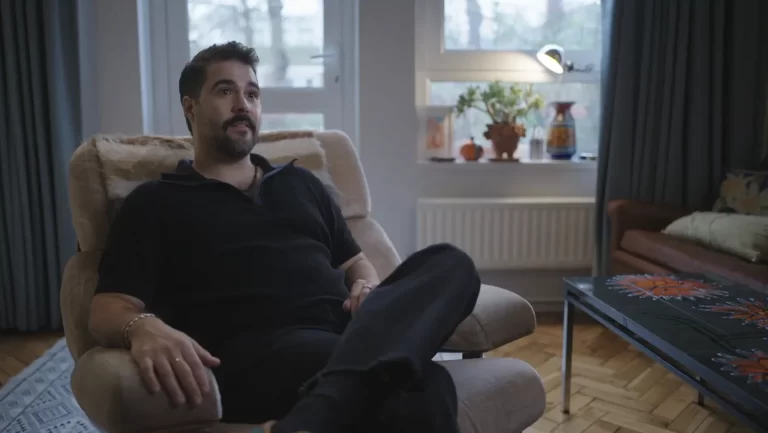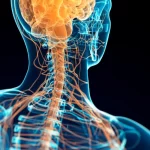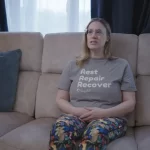What do you do when your body no longer feels like your own?
For Filippe, a vibrant and active professional based in London, the slow unraveling of his health began in October 2022. What started as occasional respiratory infections snowballed into a year-long deterioration marked by deep fatigue, brain fog, and a constant sense of illness.
“I would say that I was at the lowest point in my life.”
By August 2023, he hit what he calls rock bottom. He could no longer work. He couldn’t climb stairs without fear of collapse. Emotionally, he was drained. His world had shrunk. It was only through building a toolbox of practices and technologies—including deep rest, meditation, and nervous system support—that he slowly began to rebuild.
From Lingering Infections to Life-Altering Fatigue
For months, Filippe cycled through infection and recovery.
“I would get respiratory infections and then recover, and then within three weeks, I was sick again.”
Eventually, the exhaustion became constant. Brain fog, neurological symptoms, and a deep sense of vulnerability set in.
“It was the tiredness where you don’t know if you can physically go up the stairs or stand from a chair.”
“I felt like I was coming down with something constantly. That was the worst part.”
By summer 2023, he could no longer enjoy the simple pleasures of life. His confidence in his body collapsed. Even walking uphill became daunting.

Living With an Invisible Illness
Despite numerous GP visits, many dismissed his symptoms as a “bad winter.” One even told him long COVID didn’t exist. He eventually received a diagnosis from a respiratory specialist who confirmed both long COVID and reactivated asthma.
“Getting the diagnosis was like being hit by something heavy. Suddenly it was clear this wasn’t going away anytime soon.”
Pharmaceutical interventions offered little relief and often came with unpleasant side effects. He tried various approaches—some helped, some didn’t. But none gave him momentum.
“I had to create my own recovery protocol—a toolbox that worked for me.”

A New Path: Understanding the Nervous System
As Filippe searched for answers, he began learning about the autonomic nervous system and the role of the vagus nerve.
“I realized I was stuck in a stress response—constantly on edge, like I couldn’t turn off survival mode.”
The vagus nerve is the body’s internal communication highway—linking the brain to major organs and regulating heart rate, digestion, inflammation, and mood. When it’s functioning well, it helps shift the body out of fight-or-flight and into rest-and-digest mode.
But in long COVID, this regulation can fail. Research in Frontiers in Neurology (2024) and Nature Reviews Neurology shows that viral inflammation can disrupt vagal function, leading to fatigue, brain fog, autonomic instability, and persistent anxiety.
“When the vagus nerve is inflamed or misfiring, the body acts like it’s under constant threat. You can’t heal when you’re stuck in survival mode.” — Dr. David Putrino, Mount Sinai
Small Steps Toward Stability
Filippe’s recovery began with long guided meditations. These gave him moments of calm and clarity. Over time, he added other practices that targeted his autonomic system more directly.
“I remember doing a session late in the day before seeing friends. For the first time in months, I felt stable. That was huge.”
One of the approaches he adopted was non-invasive vagus nerve stimulation (nVNS)—a technique that delivers mild electrical impulses through the ear to activate the vagus nerve.
The stimulation process was simple: moisten the ear clips, attach to the tragus, choose the stimulation level and duration. He quickly found that lower intensities (10–13) worked best for him. Sometimes, he extended his sessions beyond the recommended 60 minutes—up to two hours a day during flare-ups.
“I use it alongside meditation, either together or one after the other. It became part of my daily routine.”

How Vagus Nerve Stimulation Works
Vagus nerve stimulation itself isn’t new. Implantable VNS devices were approved by the FDA decades ago to treat epilepsy and depression. However, they require surgery and can cost tens of thousands of dollars.
In recent years, researchers have developed ways to stimulate the vagus nerve non-invasively, particularly through a branch that runs near the surface of the ear—a method called transcutaneous auricular vagus nerve stimulation (taVNS).
One such device, developed over 10 years by the neurotechnology company Parasym, has made this technology more accessible. Backed by more than $10 million in research funding, their wearable platform has been validated in over 50 peer-reviewed studies and used in millions of sessions globally.
Clinical results show promising outcomes:
- 61% increase in vagus nerve activity in 5 minutes (source)
- 60% improvement in Long Covid symptoms (https://www.medrxiv.org/content/10.1101/2022.11.08.22281807v1)
- 45% improvement in chronic fatigue (study)
- 35% reduction in anxiety and 40% improvement in POTS symptoms (PubMed)
- 18% increase in HRV (source)
“It’s one of the few neuromodulation tools with both safety and early efficacy data,” notes Dr. Elias Quinton, Karolinska Institute. “We need more studies, but the results are encouraging.”
Building a New Baseline
“When I started, I was at 30% of my normal function. Now I’m at 70 or 80%.”
Over time, Filippe’s most distressing symptoms—tingling arms, pounding heartbeat, overwhelming brain fog—began to subside. Social events, once draining, became manageable.
“I could go out, stand up for hours, and be okay the next day. That felt like winning.”
He still experiences ups and downs, but now he has tools to navigate them. His recovery protocol, including daily nervous system regulation, meditation, and pacing, remains at the core of his progress.
Relearning Rest
Perhaps the biggest shift was internal: discovering what true rest feels like.
“Before, I would sit and spiral in thought. Now, I can sit and feel actual peace. That was new for me.”
In moments of overwhelm, he turns to his nervous system tools to reset.
“I stop zooming around. I breathe. I look around. I notice I’m here.”

A Window of Hope
Filippe doesn’t believe in silver bullets—but he does believe in momentum. And for him, daily nervous system support helped create the conditions for healing.
“It was never just one thing. But calming my system gave me the foundation to build everything else.”
He’s since shared his experience with friends and colleagues going through similar challenges.
“So many of us are stuck in stress loops. Finding something that brings your body back to safety can be a game-changer.”
Support for Patients
One of the most widely used taVNS devices today is priced around €700. The company behind it offers:
- 30 Tage Geld-zurück-Garantie
- VAT relief (UK only)
- Subsidies through research programs (when available)
Learn more at nurosym.com
Recovery from long COVID isn’t linear. For Filippe, it came in layers—through setbacks, patience, and small wins. While there is no universal fix, his story is a reminder that healing is possible when we learn to support our nervous system. Whether through meditation, rest, or science-backed tools, the path forward is rarely simple—but it is real.




Very interesting